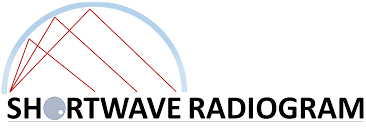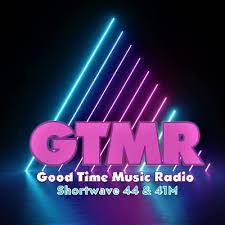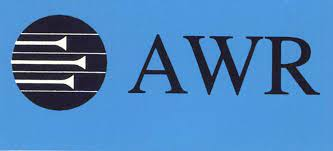For Immediate Release 30 January 2023
U.S. Military Call Sign Directory 1st Edition Now Available on Amazon
Webster’s dictionary defines the term “call sign” as the combination of identifying letters, letters, and numbers, or words assigned to an operator, office, activity, vehicle, or station for use in communication (as in the address of a message sent by radio). If you are a ham radio operator, you are issued a call sign used to identify your station to other hams. The concept is the same for broadcast radio stations (AM/FM/TV/Shortwave), maritime vessels or shore stations, civilian aircraft, and most government radio stations. Legally operated radio stations transmitting anywhere in the radio spectrum will identify at some point using a valid call sign issued to them by their national controlling authority.
However, when you start diving into the dark and murky waters of military call signs or words things are not so clear cut. Finding out who and why a particular call sign is being used can be a challenge. You won't find any official databases or publications for these call signs online. The reason for this is simple. In many instances, a military radio call sign/word is designed to keep that unit, its platform identity, its mission, and in some cases even who is on board that aircraft or vessel hidden.
Ask any radio hobbyist what information they consider important during a radio monitoring session and two items will top their list: frequencies and the call signs heard on them. If you hear activity on a military frequency, unless you can fully identify the participants by their call sign, you can’t fully appreciate or document the traffic you are hearing on your shortwave radio or scanner.
To aid the military radio hobbyists in their listening endeavors Teak Publishing has published a series of call sign books/e-books over the last several years. Now the company is pleased to announce its latest Kindle e-book in the series - the U.S. Military Call Sign Directory, 1st edition by Amazon Bestselling author Larry Van Horn, N5FPW.
In this new edition, the author presents the most comprehensive collection of U.S. military station identifications ever published for the radio listening hobby. It is the result of seven years of research and monitoring in the HF/VHF/UHF radio spectrums, by the author. No classified military sources were used in the production of this book, and due to the size of this publication, a printed version will not be available.
In addition to thousands of static and tactical call signs for the major U.S. military services, other types of identifiers such as Automatic Link Establishment (ALE) addresses and marine MMSI identifiers for U.S. Navy and Coast Guard vessels and aircraft are also included in this edition. There is also a chapter devoted to call signs/words used by the Department of Defense including the Military Auxiliary Radio Services (MARS) and the Civil Air Patrol (CAP) auxiliary services.
A whole new chapter in the book is devoted to the latest craze in military aircraft monitoring - decoding Mode-S ADS-B hex code radio signals. The chapter on these hex code addresses includes introductory material on monitoring these unique identifiers and thousands of hex codes identified by airframes. There is also an additional chapter devoted to known hex hole ranges in the DoD ADS-B spectrum.
The last chapter of this book contains a large list of resource information including Navy ship/squadron classifications; Coast Guard cutter designators; a massive list of abbreviations and acronyms that appear in the book and other Teak Publishing publications; a comprehensive country abbreviation list; and the latest Table of Allocations of International Call signs from the International Telecommunications Union (ITU).
The Teak Publishing U.S. Military Call Sign Directory is now available for purchase worldwide from Amazon.com at https://www.amazon.com/dp/B0BT658LVL. The price for this 1091-page e-Book is US$9.99. This book is being released internationally. Amazon customers in the United Kingdom, Germany, France Spain, Italy, Japan, India, Canada, Brazil, Mexico, and Australia can order the e-Book from Amazon websites directly servicing these countries. All other countries can use the regular Amazon.com website.
You do not need to own a Kindle reader to read Amazon e-book publications. You can read any Kindle book with Amazon’s free reading apps. There are free Kindle reading apps for the Kindle Cloud Reader, Smartphones (iPhone, iTouch, Android, Windows Phone, and Blackberry); computer platforms (Windows and Mac); Tablets (iPad and Android), and, of course, all of the Kindle family of readers including the Kindle Fire series. A Kindle e-book allows you to buy your book once and read it anywhere. You can find additional details on these apps at this link on the Amazon website https://www.amazon.com/b?ie=UTF8&node=16571048011.
A complete list of all the author’s military radio hobby books can be found on his Amazon author’s page at https://www.amazon.com/stores/Larry-Van-Horn/author/B00G1QMO4C. Additional information on this and other Teak Publishing radio hobby books is available on the company website at https://www.teakpublishing.com/.
Milcom Monitoring Post blog http://mt-milcom.blogspot.com/
Btown Monitoring Post Blog http://monitor-post.blogspot.com/
From the Static YouTube site https://www.youtube.com/c/FromtheStatic-83
From the Static Twitter feed @MilcomMP
If you monitor the military radio spectrum, outside of the international shortwave broadcast or ham bands, then there is something in this book for you. This e-book is a must in any radio shack reference library.
About the Author
Amazon bestselling author, Larry Van Horn, a native of San Antonio, Texas, started his radio listening hobby in 1963 when he received his first shortwave receiver.
In 1971 Larry joined the U.S. Navy and served on several U.S. naval warships and in the naval aviation community until his retirement in 1993. He retired in New Orleans with the rank of Chief Petty Officer.
He was first licensed as an amateur radio operator in 1973 with the call sign WH6INU. Later, Larry upgraded to General Class and spent his early ham days operating out of the famed KH6SP ham shack in Pearl Harbor, Hawaii, with his ham mentor and friend Butch Weber, WA4GIF, chasing DX and contesting.
Now a licensed Extra Class ham, holding the call sign N5FPW, Larry enjoys operating digital modes, contesting, ham satellites, and chasing DX. Other aspects of the radio hobby that he enjoys include monitoring military communications (throughout the radio spectrum), federal government monitoring, chasing HF utility communications (especially marine comms), general satellite monitoring, and AM/FM,/TV broadcast DXing.
After his retirement from the Navy, Larry worked for Grove Enterprises in Brasstown, North Carolina, the publisher of Monitoring Times and Satellite Times magazines. His job on the MT staff was the magazine's assistant / technical editor and staff journalist. He wrote for Monitoring Times magazine as a freelance writer and full-time staffer for over 30 years until that publication closed in 2013. Larry was also the creative force behind the publication of Satellite Times magazine and was the magazine’s managing editor, a position he held for more than five years.
He has written dozens of radio equipment reviews and several monthly columns in the pages of the former Monitoring Times including the Signals from Space, Utility World, Fedcom – Federal Monitoring column, Milcom – a military monitoring column, GlobalNet, First Look – MT Equipment/Book Reviews. Service Search, Ask Larry, and the magazine’s What’s New column.
His current writing assignment is with the radio hobby e-zine – The Spectrum Monitor. He writes a monthly Milcom column and has authored numerous features including the magazine’s annual Air Show Frequency Guide.
Over the years Larry has also written dozens of radio hobby books (some with multiple editions), dozens of magazine features, and numerous technical articles for a wide variety of communications publications and radio hobby club newsletters.
Larry is the founder and president of the Teak Publishing Company based in western North Carolina. His first e-book published under the Teak Publishing banner, the North American Enroute Aviation Guide, was an immediate Amazon #1 Best-Selling Kindle eBook.
Since then, he has authored a series of annual e-Books – The Milcom Archives, which are reprints of his Monitoring Times and Spectrum Monitor Milcom columns.




%20AIR%20Panjaub.bmp)
.jpg)


















